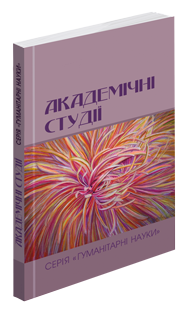Abstract
The article analyzes the communicative challenges of the digital environment as a factor in the transformation of religious representations in the metamodern era. In the context of rapid digitalization, religious communication is undergoing radical changes, forming new forms of the sacred and identity. Concurrently, with the transformation of sacred experience, technoreligious studies is emerging as an interdisciplinary field. Digital media are creating new forms of religious affiliation: online communities, virtual pilgrimages, and digital rituals are becoming part of everyday religious life. Memes, emojis, and visual language play an important role in expressing faith, contributing to a hybridization of religious and digital identity, where the sacred intertwines with the cultural codes of the Internet. In the digital age, religious representations are increasingly formed at the intersection of algorithmic logic and collective imagination, where the sacred acquires new visual and narrative forms. Contemporary communicative practices increasingly involve AI not merely as a tool, but as an active participant in religious discourse. Technology is beginning to function as an autonomous spiritual strategy: catechetical robots conduct teaching practices, algorithms compose sermons, and in dialogues with each other, AI systems can reproduce classic theological discussions, for instance, on the proofs of God’s existence. The communicative practices of technoreligious studies demonstrate that digital technologies not only mediate religious experience but also transform its structure, temporality, and institutional forms. Virtual liturgies, algorithmic mediators of faith, and platform-based forms of spiritual solidarity are becoming an integral part of the religious landscape in the metamodern era. The communicative practices of the digital age raise the question of how religious narratives adapt to the discourse of human rights, especially in the context of algorithmic moderation and platform censorship.
References
Berkeley Talks transcript: How technology is transforming religion. 2021. https://news.berkeley.edu/2021/11/05/berkeley-talks-transcript-how-technology-is-transforming-religion/
Cline, A. The Relationship Between Technology and Religion. 2019. https://www.learnreligions.com/technologyas-religion-4038599
Epstein, G. M. The History of Tech-As-Religion. 2025. https://politicsrights.com/the-history-of-tech-as-religion/
How Modern Technology Can Enhance Religious Celebrations. 2024. https://snapbar.com/blog/religiouscelebrations-are-enhanced-not-replaced-by-technology
Jackelén, A. What is “secular”? Techno-secularism and spirituality. 2005. https://www.zygonjournal.org/article/13409/galley/27195/download/
Lipka, M. The religious divide on views of technologies that would ‘enhance’ human beings. 2016. https://www.pewresearch.org/short-reads/2016/07/29/the-religious-divide-on-views-of-technologies-that-wouldenhance-human-beings/
Moon, S. Social Progress in a Technoreligious World. Technology’s Stories, 2018. 6(2). https://www.technologystories.org/social-progress-in-a-technoreligious-world/
Purba, A. B., & Sihombing, J. S. The Integration of Theology and Technology: Exploring the Impact of Digitalization on Religious Understanding. 2024. https://ejournal.ust.ac.id/index.php/InCOMNIA/article/view/4165/3122
Religion in the Digital Age. 2025. https://intersections.ssrc.org/research-topics/digital-religion/
Rupcic, T. Techno-Religion and Cyberspace Spirituality in Dystopian Video Games, 2023. 14(2), 247. https://doi.org/10.3390/rel14020247
Sinusoid, D. The Rise of Techno-Religion: The Fall of Humanism? 2021. https://www.shortform.com/blog/techno-religion/
Speir, I. Emerging Tech and Religious Freedom. 2025. https://www.thepublicdiscourse.com/2025/01/96917/

This work is licensed under a Creative Commons Attribution 4.0 International License.

